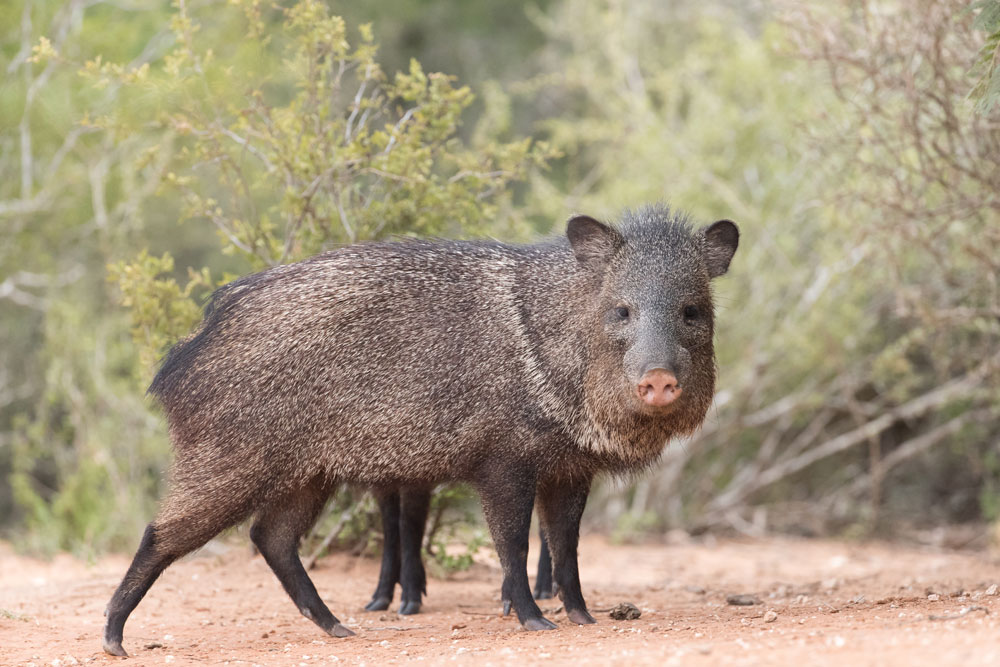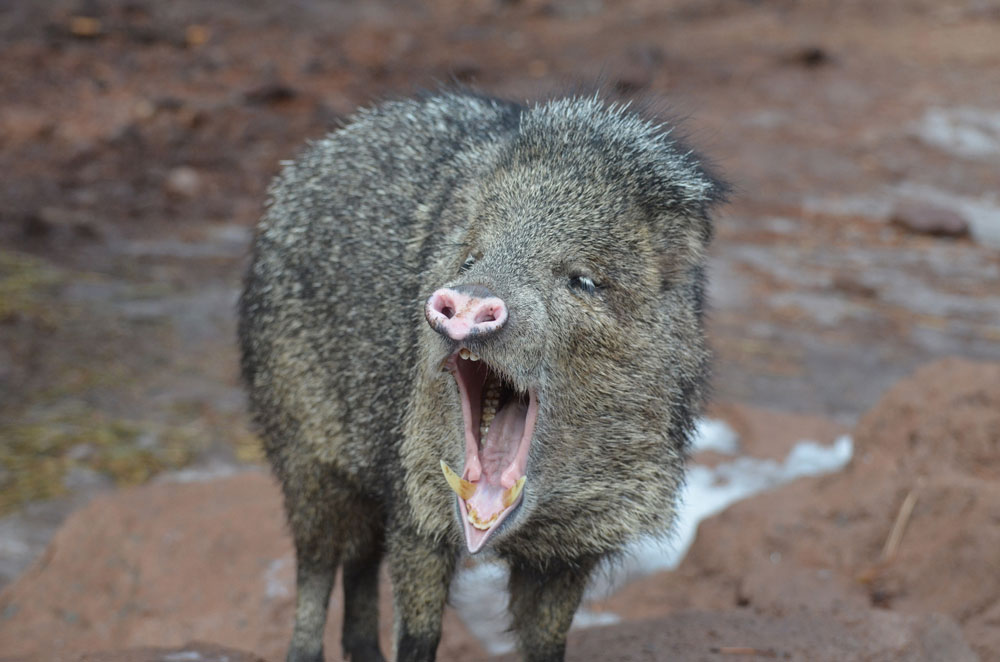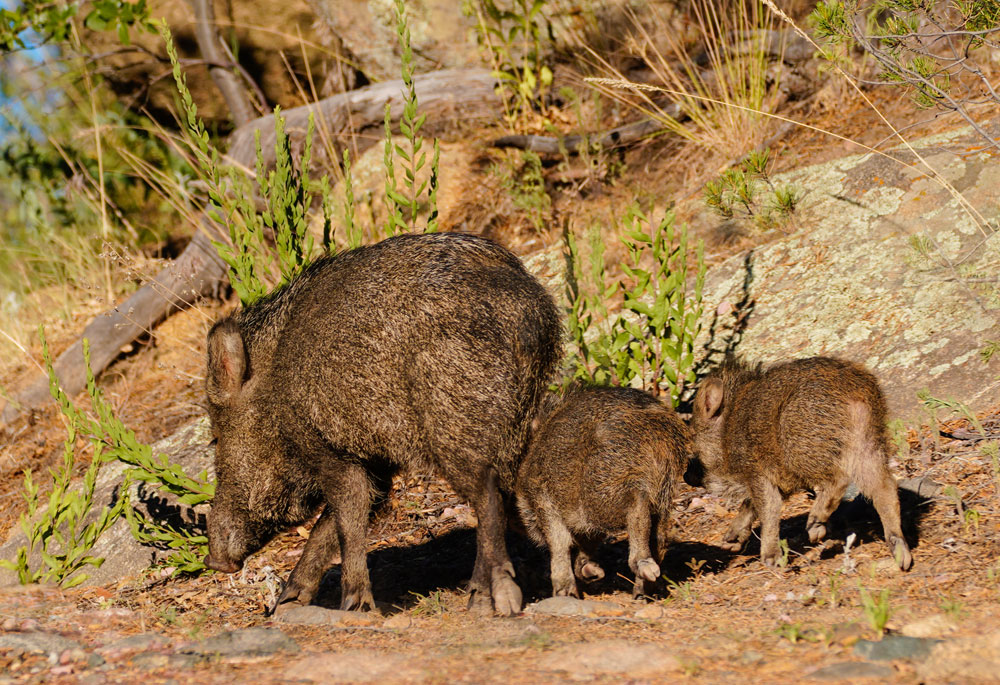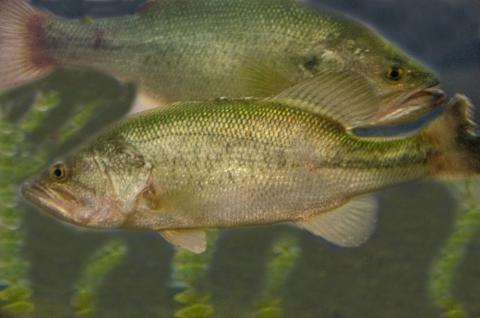If you are looking for a unique and thrilling hunting adventure, stalking javelina is unlike anything you have experienced before. These small but ferocious animals have developed a devoted fan base of hunters who dedicate themselves to the observation and hunting of these southwestern mammals.
The key to a successful javelina hunt is knowing as much about your prey as possible. Here is our comprehensive guide to everything you need to know about the javelina.

What Is a Javelina?
The javelina resembles a wild pig and is one of three species of peccary, which is defined as a social, pig-like animal.
They have short, coarse, brindled hair that lightens around the neck, giving the appearance of a collar. They have a snout and small eyes, similar to a pig, and they walk on their front two digits. However, unlike a pig or wild boar whose tusks are curved, the javelina’s tusks are straight, having evolved for crushing fibrous material, seeds, and roots.
Habitat
There are only three species of peccaries in the world. The javelina’s Latin name is Tayassu tajacu, and its cousins are the white-lipped peccary, which lives in Southern Mexico to Northern South America, and the Chacoan peccary that lives in Bolivia, Argentina, and Paraguay.
If you’re wondering where to shoot for javelina, they thrive in rocky, arid climes like the desert of the southwestern United States in parts of Texas, Arizona, and New Mexico. They prefer areas such as the saguaro desert that offer ample supplies of prickly pears and mesquite. You can also find herds close to desert watering holes and other permanent water sources.
As they are unable to cool down through evaporation like other animals, they tend to remain in shady areas such as under cliffs and caves during the hottest parts of the day and venture out to forage when it is cooler.
Habits
Rapacious omnivores, javelinas will eat almost anything they come across. Their primary food sources are desert plants, but, on occasion, they’ll eat grubs, birds’ eggs, bugs, and reptiles like lizards.
Their favorite plants to munch on include sotol, prickly pear, agave, some types of tubers, and acorns from the scrub oak.
Although they aren’t great for eating, the larger predators like black bears, mountain lions, and jaguars all feast on javelinas from time to time. Bobcat, coyote, and other smaller predators avoid the javelina, perhaps because of the threat of its razor-sharp tusks and unshakeable fighting acumen.
Javelinas are incredibly social animals and stay in groups almost all of the time. This means, when you’re out hunting javelinas, if you see one, there are sure to be more somewhere close by.

Physiology
Javelinas resemble pigs in that they have stout bodies, a snout, bristly hair, and a jutting underbite on their bullet-shaped heads. Although they closely resemble the family of pig and boar, they are very distant cousins, as the genetic split between these species occurred over 30 million years ago.
Mature javelinas weigh between 40 and 60 pounds, and they sport brownish-gray bristles with a highlighted, prominent collar between their shoulders.
They have scent glands, as one of their keenest senses is their sense of smell. This particular physiological detail can help you find javelina, as the musky smell they use to communicate and mark their territories is quite pungent and leaves a trail.
They have incredibly poor eyesight compared to their super sense of smell. Because of this, javelinas often feed at dusk in the thick brush where they don’t need good vision to find sustenance.
How to Find a Javelina
Some clues indicating the presence of prey while you’re hunting javelinas are signs of feeding. You’ll see chewed-up prickly pear paddles, shredded agave and sotol, and cow patties that have been rooted. You’ll also see turned-up ground where the javelinas have snuffled through the first layer of undergrowth.
Under rocky overhangs, in tucked-away places in the shade and out of the desert sun, you’ll often find evidence of javelinas bedding down. You can also sniff them out, as their powerful musk glands, located at both their hind ends and heads, exude a pungent, telltale olfactory clue.
How to Stalk a Javelina
The primary tactic of javelina hunting is to spot them, and then stalk them. Glassing, or using your binoculars to spot your prey, should be your focus when hunting javelinas. Set up optics from a high vantage point for the best view and for effective concealment. They camouflage well against the backdrop of the desert, and it may take a while for you to spot a group.
Once you find a group of javelinas, your main tactic should be to play to the wind. Javelinas rely on their sense of smell, so you have to mask your own scent as much as possible so they don’t get wind of your presence.
Once you get within 50 yards of the javelinas, take into account their hearing and eyesight. Although not the strongest of their senses, javelinas can still see and hear you. If you are spotted, freeze for a few minutes. Javelinas have very short attention spans. They will usually forget about you if you are completely still for a while.
How to Bag a Javelina
Javelinas respond with vigor to a distress call of another javelina. Being social animals, they react with a speed and ferocity unmatched by other big game. A call blown outside of 75 yards might not elicit much of a response—but call within range of the bristly creatures, and they’ll come running.
When you’re lining up a shot at individual javelina, remember that their vitals are small, so you must be very accurate to make an ethical shot. Sometimes, a bullet will go through one javelina and hit the one behind it as well.
These aren’t huge animals, but they are some of the fiercest prey animals many hunters have come up against. Match your weapon to your prey and come in close to set up the perfect shot.
Once you’ve bagged javelina, take the time to remove its scent glands, both fore and aft. If left untouched, the scent glands can flavor the meat and hide, leaving a foul taste and odor.
If you want to eat your trophy, you will have to dress the animal in the field to get rid of those scent glands. Once this is accomplished, treat the javelina much like a boar in butchering and cooking techniques. Slow roasted javelina or a javelina stew both make the most of this fierce desert animal.

Although on the smaller side, javelinas are tough little beasts that offer a lot of challenges when spotting them, stalking them, and bagging them. They have a tenacious spirit and razor-sharp tusks that make any hunters’ heart rate speed up.






























